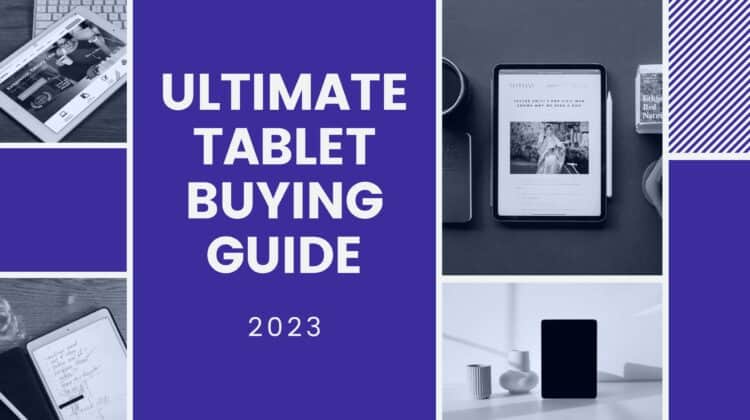
A tablet is a reasonable compromise when deciding between a phone and a laptop or desktop computer. It can be taken anywhere, has a more expansive touch screen, and facilitates productive work on the move. A tablet could replace both your phone and laptop in most situations. But buying a tablet in 2023 can be tricky!
Choosing the correct tablet may sometimes be a difficult task. Finding a tablet that fits your needs in terms of screen size, processing speed, and battery life while staying within your price range can seem daunting.
Apple’s iPad remains a popular option, but there are plenty of alternative tablets from Samsung, Xiaomi, Asus, and other brands to consider. Tablets have evolved beyond their original use as a media player; many may now be used for business as well. Since you’ve got more options than you can ever explore, it’s time to start hunting for the perfect mix of features that satisfies your needs.
Perhaps this tablet buying guide will address some of the most pressing concerns you may have had when shopping for one!
Tablet Buying Guide: Choosing the right OS
The operating system (OS) you’re using is a significant determinant of what media formats you can view. Windows tablets and Chrome OS tablets are also readily available, but the big players are Android and Apple iPads. They alone account for the vast majority of the market. If you choose an Android tablet, ensure it receives system updates regularly. Unlike Apple products, Android tablets need careful monitoring of software upgrades.
iPadOS on Apple iPads
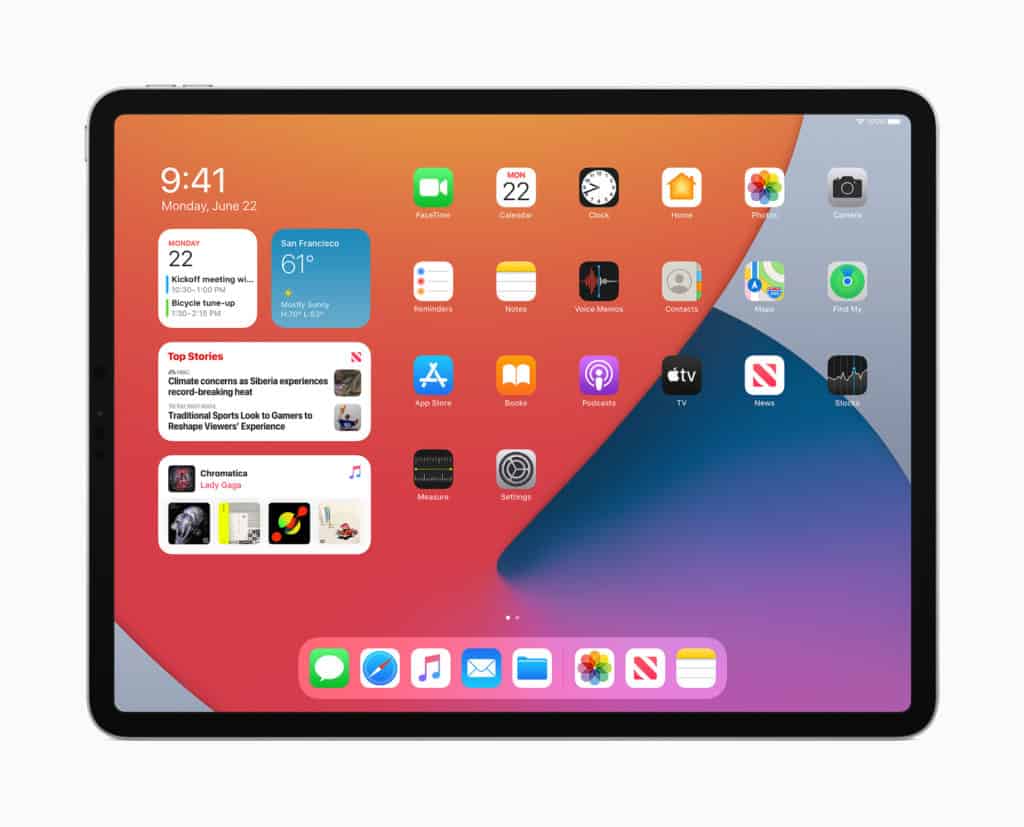
Apple’s iPad operating system (iPadOS) is essentially an adaptation of iOS tailored to the iPad’s hardware. Its App Store provides a polished user experience with access to various fun and useful applications. Support for widgets, multitasking, FaceTime, compatibility with a mouse and a keyboard, etc., makes the iPad’s operating system (OS) among the best available. You can even utilize your iPad as a secondary display, which is very helpful if you work on a MacBook.
Ultimately, if you want the most seamless integration into Apple’s ecosystem, any iPad from Apple is your best bet.
Android OS on Android Tablets
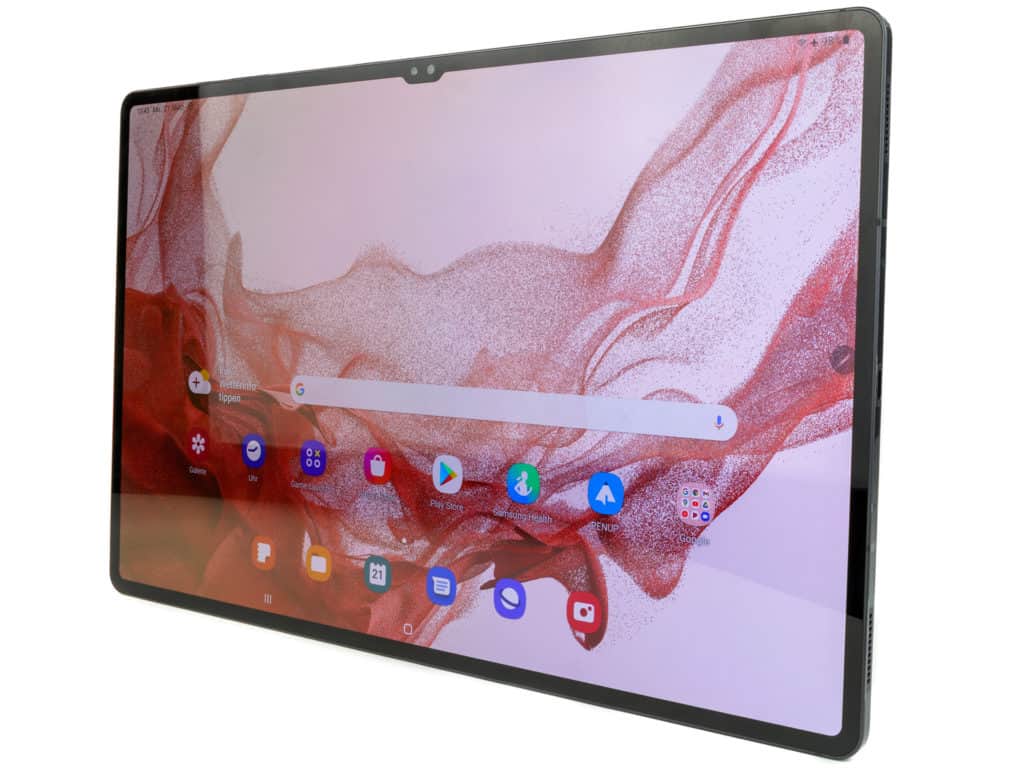
Undoubtedly, Google’s Android operating system has the largest smartphone user base. Android also powers some of today’s best-selling tablets. Samsung and Lenovo are two of the most well-known names in Android tablet production.
The Android operating system in tablets is identical to that in smartphones, except for a few tweaks made by manufacturers to improve the user experience. Features like enhanced multitasking, tablet-specific widgets, and more are on display.
A wide variety of useful and entertaining applications are available for download from the Google Play Store for your tablet.
To get the most out of your tablet, you should choose one that runs Android 11 or later and promises to get the next major Android upgrade.
Amazon FireOS For Fire Tablets
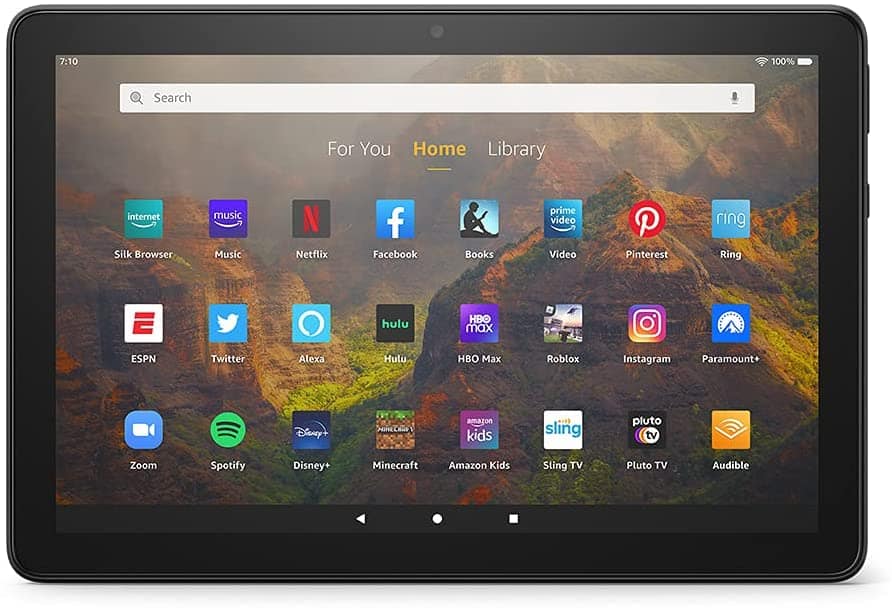
Fire OS is a heavily modified version of Android designed to highlight Amazon’s content and applications, and it runs on Amazon’s inexpensive Fire tablets. Fire OS is a stripped-down version of Android; one of its biggest limitations is that it only supports the installation of apps from Amazon’s App Store, which offers a smaller range of Android apps than the Play Store.
Since Google’s services are inaccessible, you won’t have access to YouTube, Google Drive, or Gmail on a Fire tablet. An Amazon Fire OS tablet is a good choice if you like to read books and watch videos and are already heavily involved in Amazon’s ecosystem.
Windows OS For Microsoft Tablets
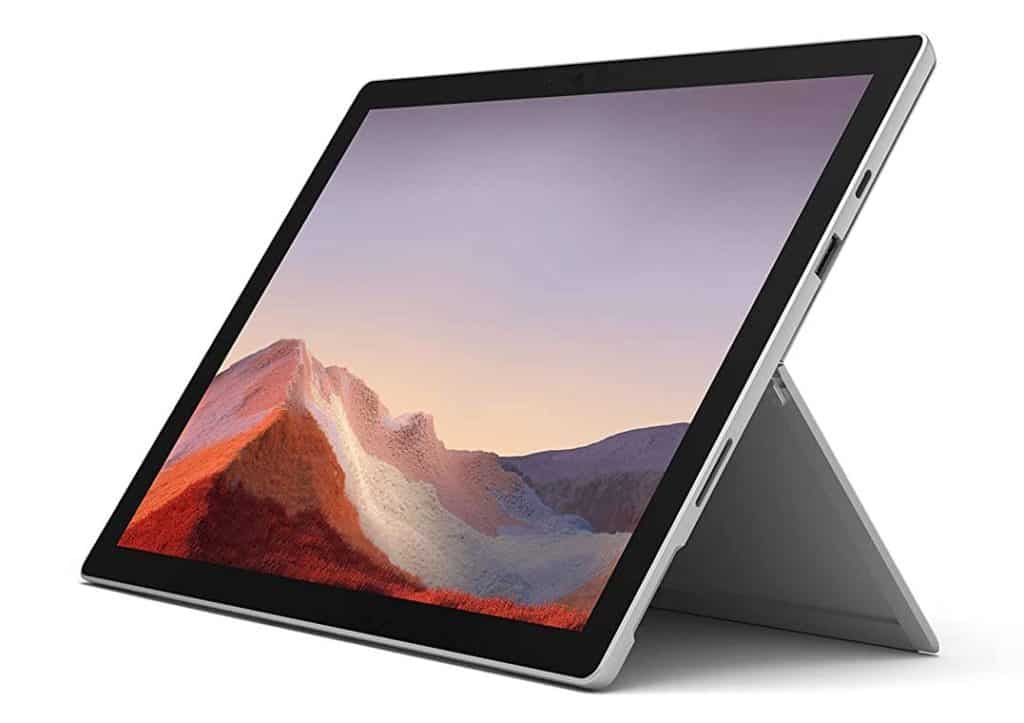
Microsoft does, in fact, produce a small number of Windows-powered tablets, although they have a tiny market share. Only Microsoft’s Surface GO tablets are available on the market nowadays, while none of the other tablet makers provide devices running the Windows operating system.
Because of the versatility of the Windows operating system, tablets running this software can effectively replace your laptop. Integrated Adobe applications and software development tools are also supported.
You can get the same Windows software version on your tablet that you already use on your computer from the Microsoft store. Microsoft designed Windows 10S for tablets to be a stripped-down version of Windows. However, it still has all the standard Windows components and is compatible with various peripherals.
Chrome OS For Convertible Chromebooks
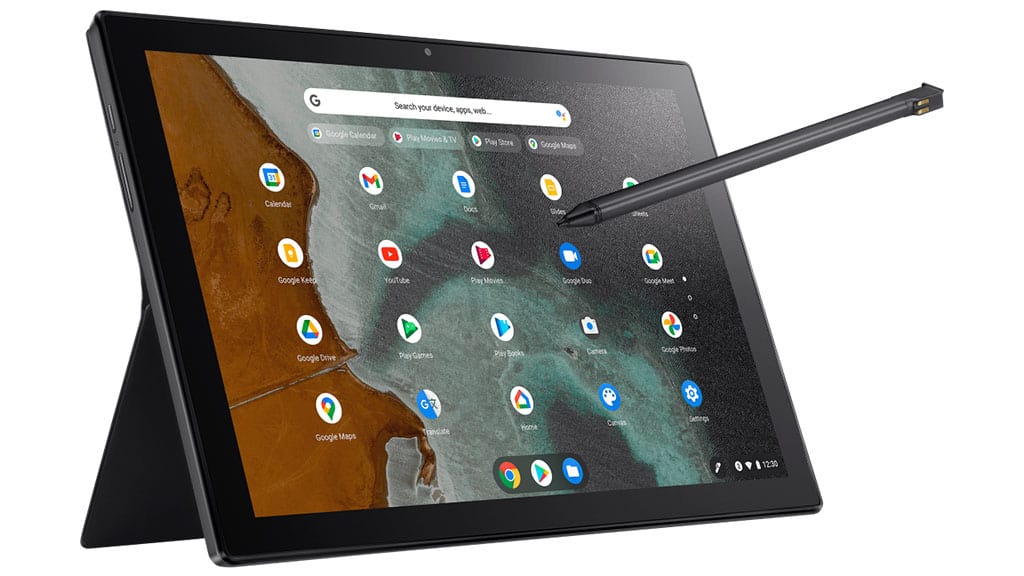
Chrome OS is a Google-developed lightweight operating system that powers Chromebooks. Chrome OS is optimized for the web browser but also supports Chrome applications and Android apps from the Play Store.
While most Chromebooks are laptops, HP has recently released a few excellent tablets. Despite having fewer processing cores and lower-resolution displays, these tablets may be helpful for simple web browsing. This makes Google’s Chrome OS a good option for anyone looking for such a device.
If you can afford it, go for the Apple iPad operating system; if not, and you need an Android tablet, check out Samsung’s offerings.
Tablet Buying Guide: Finding The Perfect Size
A tablet is a little bigger than a smartphone and much smaller than a desktop computer. The tablet computer has wholly altered the way people work and have fun. Tablets have ushered in a plethora of new possibilities, but how do you know which one to choose when there are so many screen sizes available? Here, we’ll explain the differences in tablet display sizes to assist you in selecting the appropriate one.
Even though there isn’t a “standard” screen size for tablets, most of the ones considered to be “medium” are between 10 and 11 inches. The smallest tablets range from 7 to 8 inches, while the size of the largest tablets ranges between 12 to 14 inches.
Smaller tablets: 7 to 8-inches
If you need something you can throw in your bag without giving it any consideration, a smaller tablet is your best bet. They’re easy to carry, cheap, and inexpensive. When traveling, a smaller tablet is perfect for reading ebooks and executing other simple functions like checking email, sending text messages, and watching TV shows.
Which tablet under 8-inches would we recommend? The Samsung Galaxy Tab A7 Lite is a great Android tablet in this size range alongside Apple’s iPad Mini. The lightweight body and compact form factor make it convenient to use with one hand. It easily fits into your luggage for quick access on the go.
A small-screen tablet is a good option if you:
- Want a tablet for casual use, including reading and surfing
- Want something easy to carry around and won’t cost much
- Value portability and price comparability equally
Further Reading: Our full 7-inch and 8-inch tablet buying guides
Mid-sized tablets: 10 to 11-inches
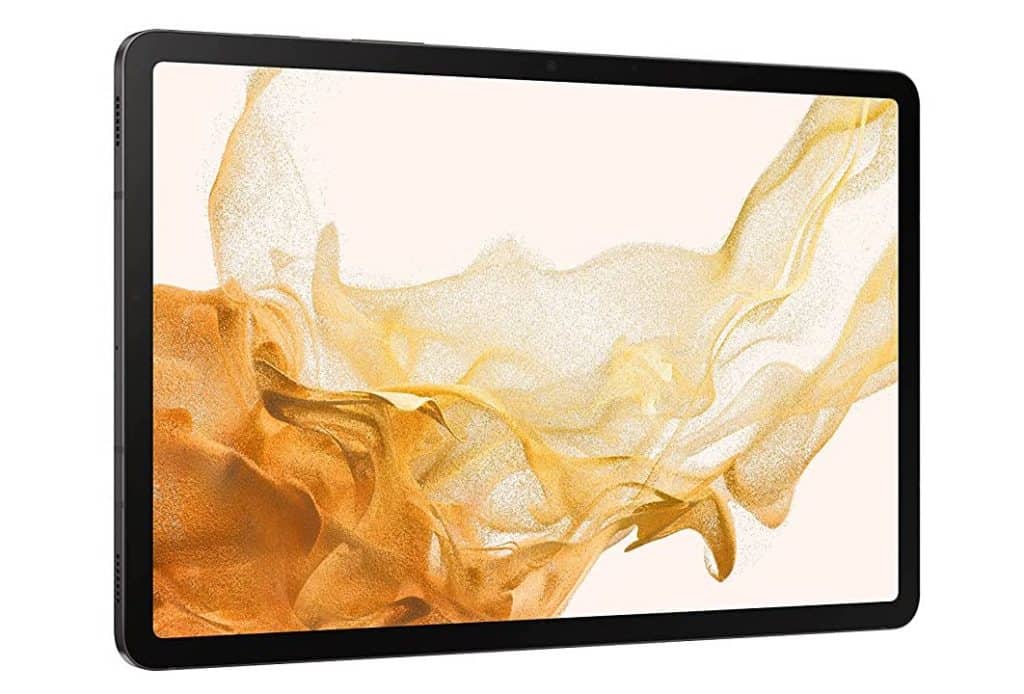
Tablets in this size range combine the advantages of smaller and larger devices. They thrive at various tasks, are portable, and provide a good compromise between high-end specifications and reasonable pricing.
This means that mid-sized tablets are great for everyone in the family — whether you wish to complete some tasks, keep your children occupied with the newest games, or want some alone time while binging on your favorite show or movie.
The Samsung Galaxy Tab S8 or iPad Pro are excellent options if you’re looking for a tablet with a screen size between 10 and 11 inches.
Get a medium size tablet if:
- You want a tablet that can serve as a family entertainment hub while still being useful for light office tasks
- You need a device with a battery that can run through the day
- You want a powerful yet affordable tablet
Further Reading: Our full 10-inch tablet buying guide
Large screen tablets: 12 to 13 inches
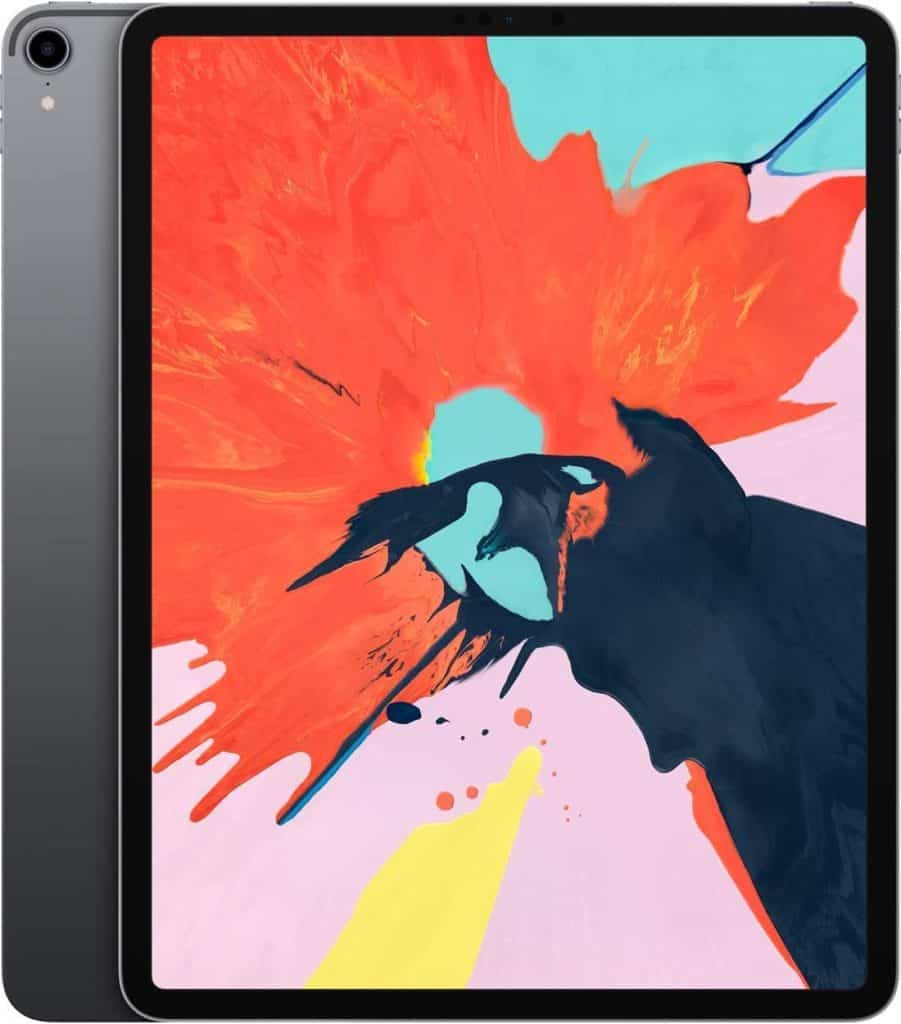
Bigger is better, right?
The freedom and control that comes with a widescreen table are invaluable in pursuing success and efficiency. If you want to use your tablet for everything from writing long reports to playing high-end games to unwinding with the newest popcorn flick, a tablet with a stunning and large screen like the Samsung Galaxy Tab S8 Ultra and iPad Pro 12.9-inch are the best options.
Get a large screen tablet if:
- You need a tablet that can handle several tasks and has a long battery life
- You want a tablet for entertainment and gaming purposes
- Low portability is not the deal breaker for you
Tablet Buying Guide: WiFi vs Cellular
Tablets excel in the roles of media consumption and reference aids for tasks like looking up recipes, making itineraries, or just browsing the internet. The catch is that the tablet loses much of its luster when you’re not using it to access the Internet. That’s why many models come with cellular service as an add-on.
For example, tablet manufacturers like Apple and Samsung often provide the option of adding cellular service via a telecommunications provider like AT&T, T-Mobile, or Verizon, albeit this will cost you more money.
Nowadays, tablets may connect to the Internet through cellular networks thanks to their built-in cellular radios, mainly 4G at the moment. Still, Apple and Samsung have already started offering tablets with 5G coverage.
You’ll also need to pay for data charges when web browsing or video streaming. You should carefully consider whether you require a 4G/5G connection before purchasing a new tablet since the monthly payments can be rather expensive.
It’s helpful for on-the-go tasks like checking up on directions, playing games, and video calling, but if you already have a smartphone, you probably don’t need one as you can use the WiFi hotspot on your smartphone and connect your WiFi tablet. Moreover, you can load offline media and games on your WiFi tablet.
Tablet Buying Guide: Price Range
Regardless of your specific needs, pricing will almost certainly be one of your top priorities when shopping for a tablet. While a decent tablet would cost upwards of a few hundred dollars a few years ago, today’s tablet prices span a considerably broader range.
Under $100
Android tablets are now more affordable than ever, thanks to intense rivalry among tablet manufacturers like Amazon, Samsung, and others. Amazon has done the best job of finding its place in the market, and as a result, the company currently sells numerous versions of its Fire tablets for around $100.
See Also: 8 Best Tablets under $100
Between $100 – $300
Larger, higher-end Android tablets may be found starting at $200 if you’re ready to pay a little more. In this price range, Samsung offers several excellent Android tablets that are faster and more powerful than Amazon’s Fire tablets. This is because Samsung tablets run on pure Android and provide full access to the Google Play Store, whereas Amazon’s Fire tablets run on Amazon’s own Fire OS and are restricted to Amazon App Store.
See Also: Best Tablets Under 300
Between $300 – $500
A brand new iPad will set you back at least $300, so factor that in if it’s on your shopping list. A basic iPad can be purchased for about $329.
However, it has a dismal 32GB of storage space, especially when you think it is marketed as a device for viewing and editing images, watching movies, playing games, and utilizing all your favorite applications. The 32GB you have paid for will rapidly fill up if you try to do it all.
You can’t extend the storage on your iPad as you can with many Android tablets using a memory card.
See Also: Best Tablets under $500
Between $500 – $1000
Expect to spend at least $799 for the 11-inch iPad Pro if you want the finest and most powerful iPad imaginable. This is the starting price range for decent tablets, but for that money, you get an excellent device with a gorgeous display and unmatched speed courtesy of Apple’s lightning-fast M1 chipset.
Above $1,000 and up
The 12.9-inch iPad Pro has a mini-LED display and starts at $1,099. It is better but costlier than the 10.5-inch iPad Pro. If you’re prepared to pay, this is the best tablet out there. The high-res display comes into its own when showing HDR content, but HDR compatibility in iOS applications is still quite uncommon.
Recommendation: Samsung makes excellent tablets that are more affordable than iPads and are superior to competing Android tablets.
Tablet Buying Guide: RAM, Camera, and Battery
For many users, specifications like RAM, camera quality, and battery capacity play a major role in choosing any smart device.
RAM
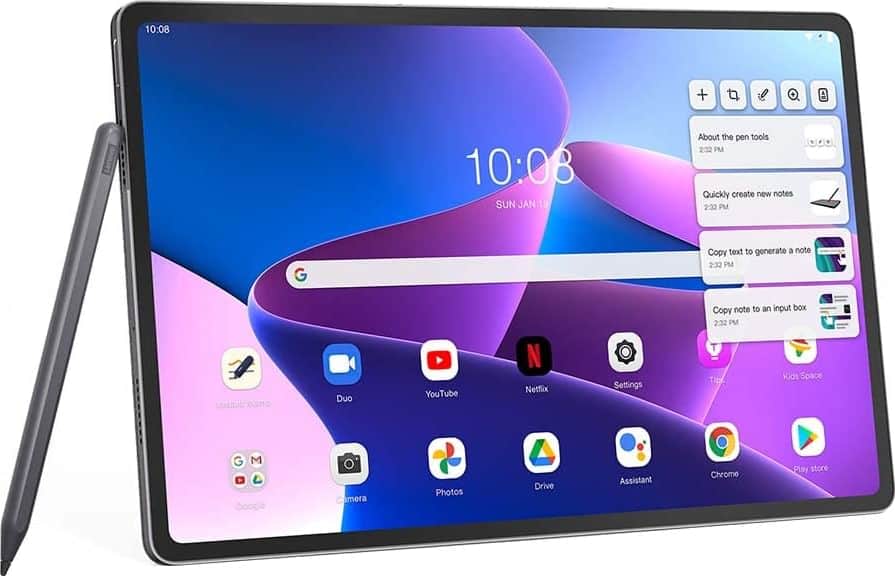
Although RAM is not a major selling factor for tablets, the more RAM you have on an Android tablet, the better its performance will be. RAM capacities range from 4GB on the iPad Mini to 8GB on the iPad Pro series and 3GB on the Apple iPad 10.2. The RAM storage capacity is irrelevant since the iPad OS has a great memory management mechanism.
The ability to multitask and run many applications simultaneously on an Android tablet requires a significant amount of RAM. With Android’s poor memory management, 4GB of RAM is considered the bare minimum for a tablet. You should aim to get a device with more RAM if you want everything to go off without a hitch.
Cameras
Cameras on tablets aren’t nearly as useful as those on smartphones. The front-facing camera holds more importance than the rear-facing one. The quality of the front-facing camera should be adequate for its intended use, which is for video calls.
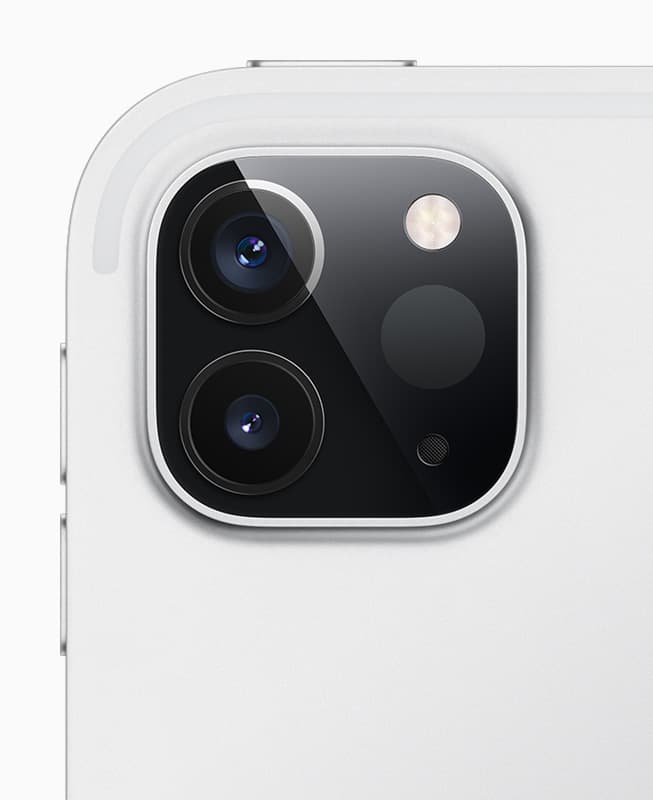
It is recommended that the front-facing camera on your tablet have at least 5 or 8 megapixels. It should be capable of recording in at least full-HD resolution and have autofocus. The best way to test this is to visit a physical store near you and check the camera quality yourself or go through the reviews of every tablet you are considering.
Battery
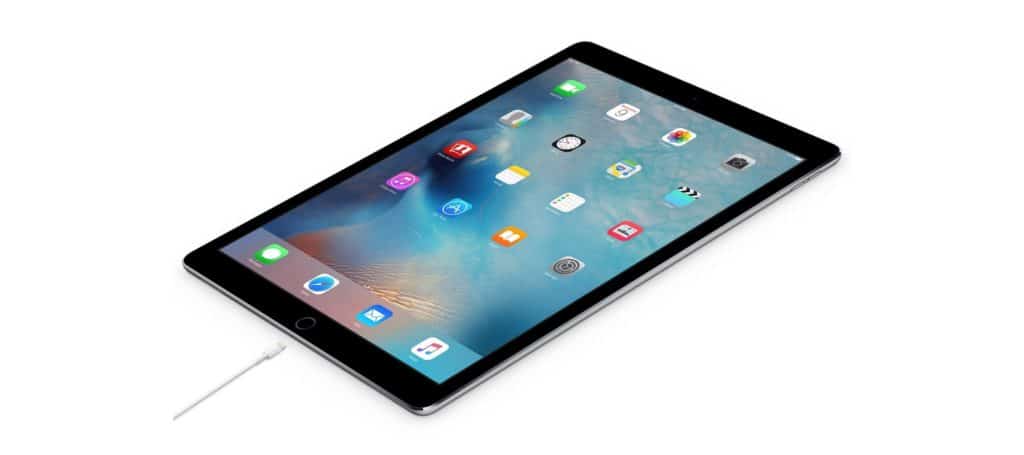
Battery life is another crucial factor to think about when choosing a tablet. The tablet’s battery life should be able to sustain continuous use for at least one day. If you don’t use your tablet often, the battery should last for many days, if not weeks.
However, if you anticipate using your tablet for extended periods, it is recommended that you choose one with at least 8-10 hours of battery life per charge.
The battery life of tablets may be quickly depleted by doing certain tasks. Battery life will drain more rapidly while playing visually intense games than other tasks, such as surfing the internet. If you’re looking for an iPad that can last all day on a single charge, go no further than the iPad Pro series.
Android fans may enjoy over 13 hours of continuous use from a single charge of the Samsung Galaxy Tab S7 or S8. There are Lenovo Tab models with battery lives of over 10 hours. A 5000mAh battery is plenty for most tablets, but you shouldn’t settle for anything less than 10 hours of battery backup.
After Sales Support
There is a high probability that you may have technical troubles with every gadget you acquire. This means you should also consider the device’s manufacturer and see if you can trust purchasing from them. Brands with a limited number of local service locations may not be the best choice.
It’s better to steer clear of lesser-known brands and instead stick with major brands like Apple and Samsung because of their excellent support for clients in every city. While companies like Lenovo and Xiaomi may sell tablets at a discount, they can’t compete with Samsung and Apple when it comes to customer support.
Tablet Buying Guide: Compatible Accessories
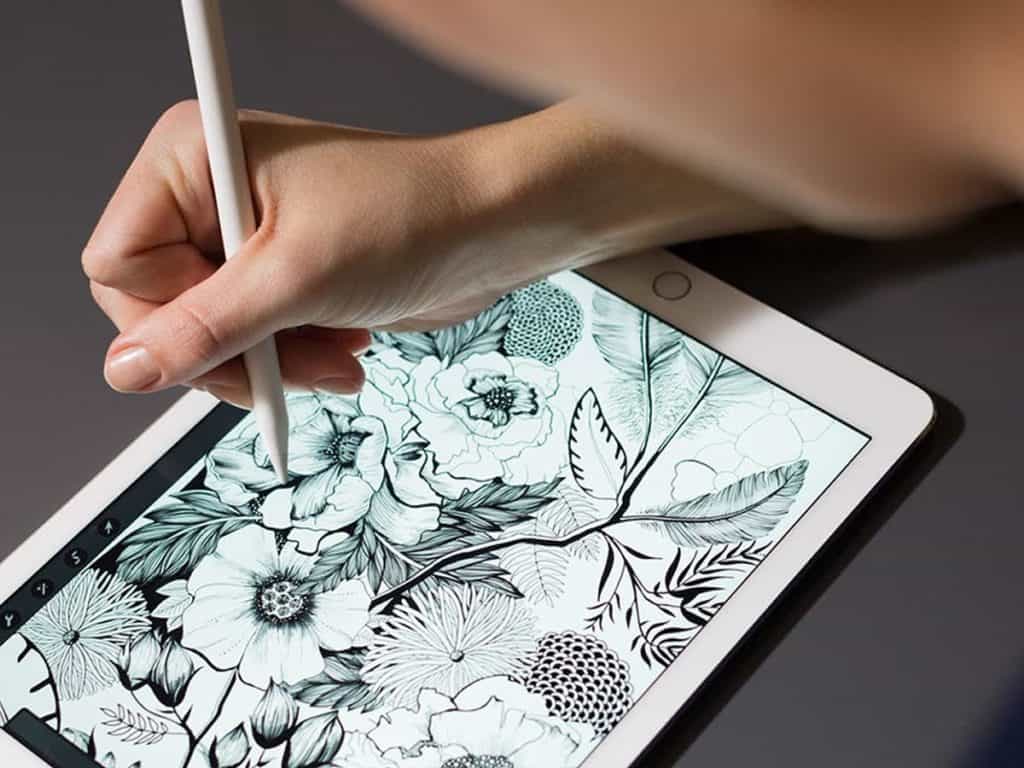
Finally, while looking for a tablet, you should think about which accessories, if any, you’d want to get. iPads and other tablets were once marketed as portable entertainment centers, but they have also recently developed into capable creative workspaces.
In particular, two major add-ons may significantly enhance your new tablet’s functionality and should be seriously considered. The first consideration is whether or not you plan to use your tablet for note-taking, drawing, or doodling. A good stylus is essential if this is the case. The magnetic Apple Pencil is a must-have accessory for every iPad.
Consider an Android tablet if you’re looking for an alternative to the Apple Pencil. If you know you’ll need a pen from the get-go, it’s best to shop around for a highly rated Android tablet like the Samsung Galaxy Tab S6/S7/S8 or the Huawei MediaPad M5 Lite that has an excellent stylus.
Second, is it important that your tablet can replace your laptop in a crisis? Consider purchasing a tablet with an excellent keyboard dock if you want to use it for extensive note-taking and writing.
Apple offers a variety of keyboard covers for the iPad, but before you purchase one, make sure it’s compliant with your iPad model. With each iPad purchase, you’ll have the opportunity to buy a keyboard and stylus designed just for the iPad at the Apple Store.
There are a plethora of third-party accessory alternatives for Android tablets. Several Galaxy tablets, including the fantastic Galaxy Tab S8, were complemented with high-quality detachable keyboards from Samsung.
Since one of the main selling points of a Windows tablet is that it can double as a Windows laptop when necessary, purchasing a Microsoft Surface Type Cover is also a good option if you’re considering purchasing a Surface tablet.
Conclusion
We hope our guide made the task of buying a tablet in 2023 easier for you! Take into consideration all the major points we made above and only compromise when you can’t find an alternative. Let us know which tablet you finally choose at the end of your buying research!
If you go for an iPad, here’s a handy guide for you — 12 Things To Do When You Buy A New iPad

Leave a Reply